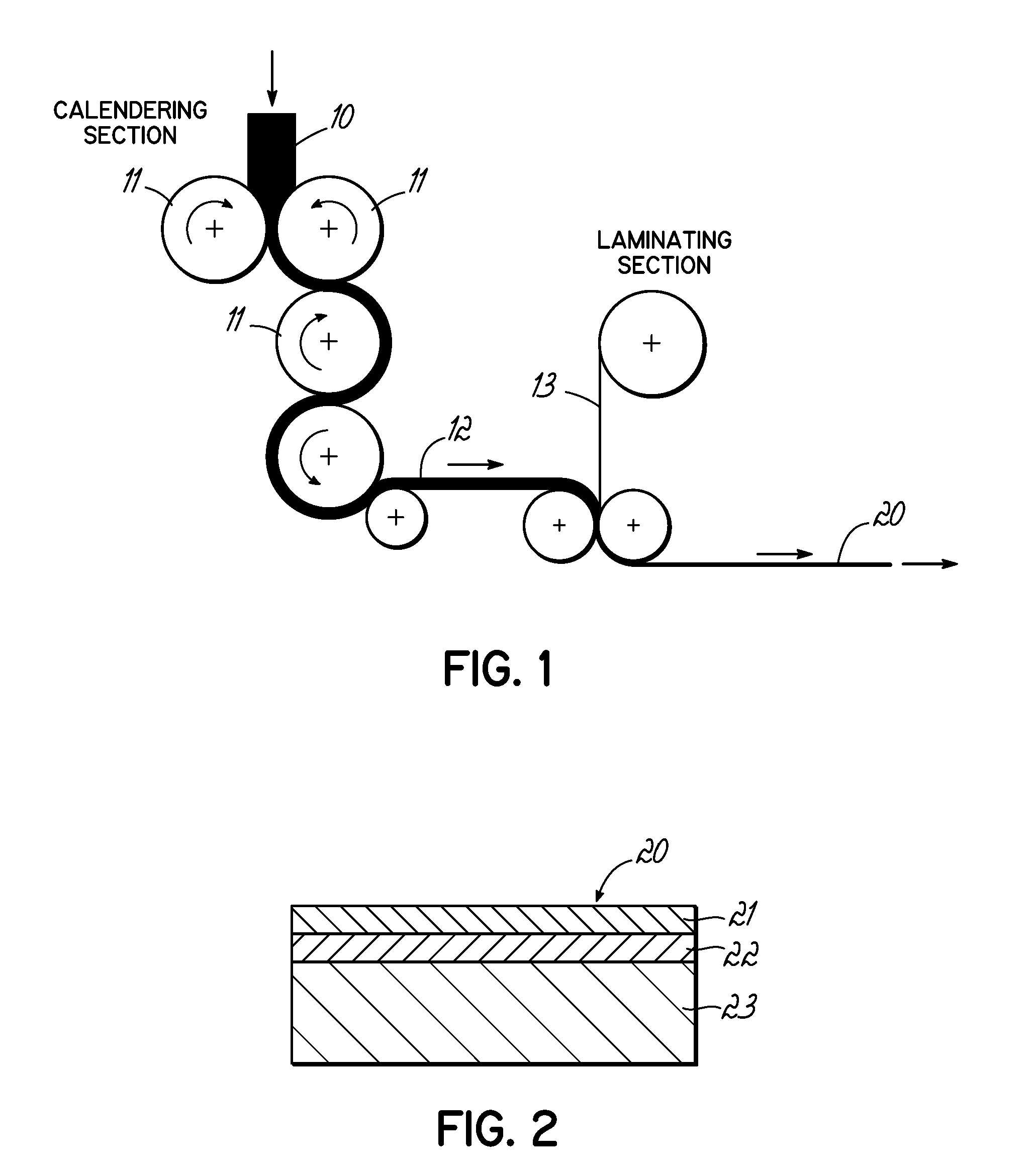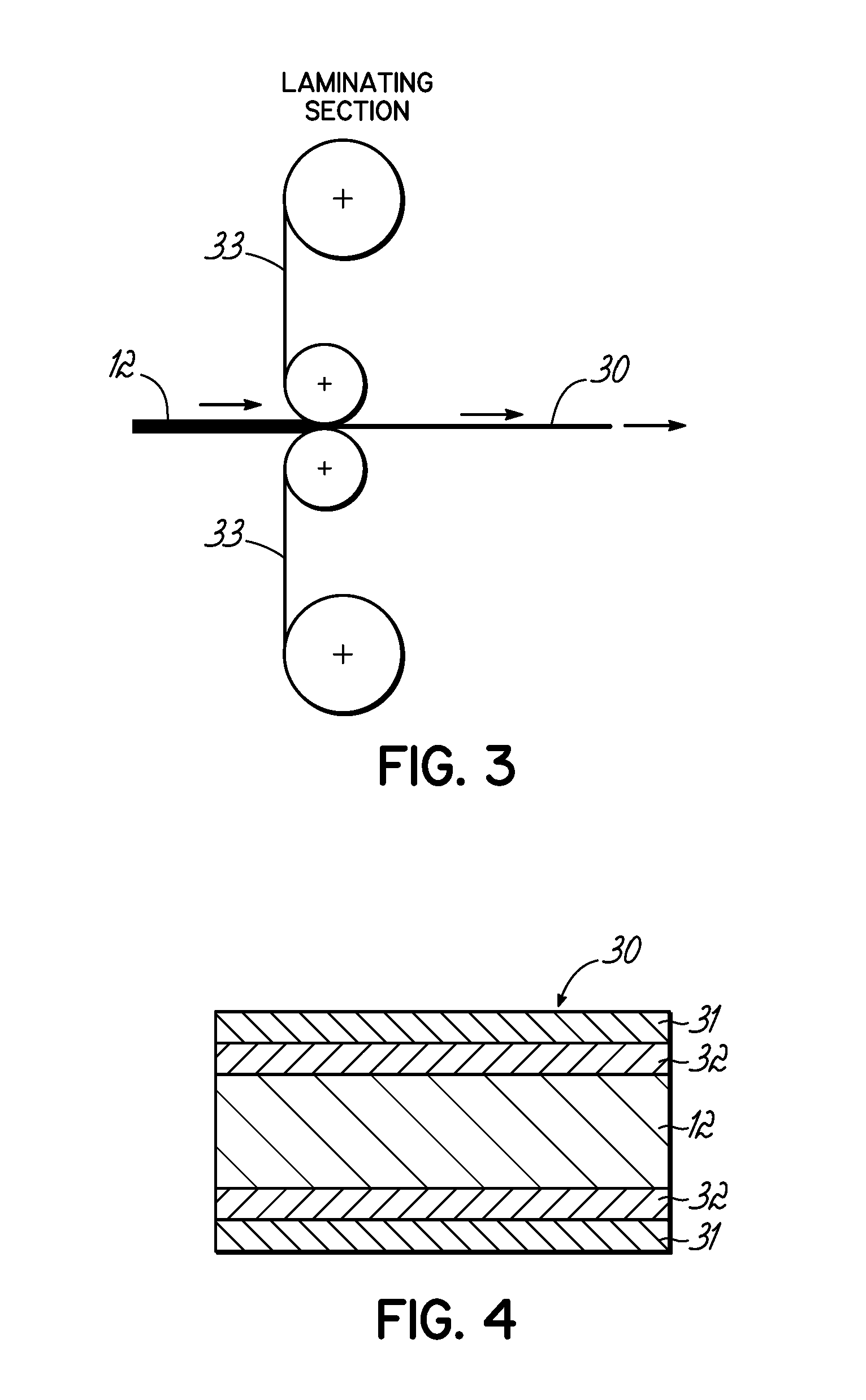Printable magnetic receptive composite sheet and method of making
a magnetic receptive and composite sheet technology, applied in the directions of printing, transportation and packaging, chemistry apparatus and processes, etc., can solve the problem that no known method is believed to allow for acceptable products, and achieve the effect of convenient information conveying and easy printing
- Summary
- Abstract
- Description
- Claims
- Application Information
AI Technical Summary
Benefits of technology
Problems solved by technology
Method used
Image
Examples
example 1
[0021]With reference to the drawings FIGS. 1 & 2, a chlorinated polyethylene polymer is blended with an auxiliary agent such as EVA and polyolefin elastomer along with the ferrous alloy powder as defined above. The ferrous powder is manufactured by BGRIMM Materials & Technology Co., Ltd. in China. The percentages in the mixture of the composition include about 30% polyethylene, about 50% ferrous alloy powder and about 20% auxiliary agents, such as, the combination of EVA and polyolefin elastomer.
[0022]With reference to FIG. 1, the composition is calendered by passing the polymer binder / magnetic material blend as a continuous sheet 10 through a number of pairs of heated rollers 11 shown diagramatically in FIG. 1. Roller temperatures typically range from about 165° C. to 180° C. during calendering. The resulting flexible calendered sheet 12 is then laminated to a printable substrate 13 in-line as shown in FIG. 1 to form the magnetic composite sheet 20 of FIG. 2. The lamination can occ...
example 2
[0023]With reference to the drawings FIGS. 3 & 4, an alternative laminating section is illustrated for producing the printable magnetic receptive composite 30 having printable surfaces 31, 31 on both sides of the composite. The composition of Example 1 of polymer binder / magnetic material blend is passed as a continuous sheet 10 through a number of pairs of rollers 11 shown diagramatically in FIG. 1. Suitable roller temperatures typically range from 165° C. to 180° C. during calendering. The resulting flexible calendered sheet 12 is then laminated on both sides to a printable substrate 33 as shown in the alternative laminating section of FIG. 3 to form a magnetic composite sheet 30 of FIG. 4. Lamination can occur in different ways as described above in Example 1 with references to FIGS. 1 &2, however in this example, the magnetic composite sheet 30 of FIG. 4 has a printable surface layer on the top 31 and bottom 31, or both sides, of the composite 30.
[0024]One specific example of a d...
PUM
| Property | Measurement | Unit |
|---|---|---|
| wt | aaaaa | aaaaa |
| wt | aaaaa | aaaaa |
| temperatures | aaaaa | aaaaa |
Abstract
Description
Claims
Application Information
 Login to View More
Login to View More - R&D
- Intellectual Property
- Life Sciences
- Materials
- Tech Scout
- Unparalleled Data Quality
- Higher Quality Content
- 60% Fewer Hallucinations
Browse by: Latest US Patents, China's latest patents, Technical Efficacy Thesaurus, Application Domain, Technology Topic, Popular Technical Reports.
© 2025 PatSnap. All rights reserved.Legal|Privacy policy|Modern Slavery Act Transparency Statement|Sitemap|About US| Contact US: help@patsnap.com



